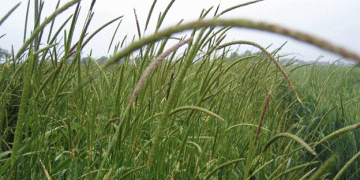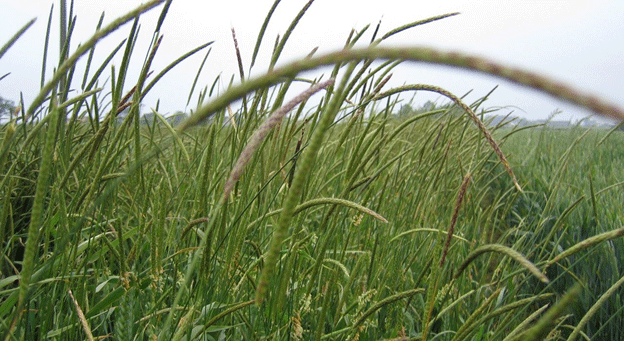In the ongoing battle against herbicide-resistant weeds, two significant breakthroughs have emerged: the full genomic sequencing of blackgrass and shortawn foxtail. These grass weeds have become notorious for their resilience to herbicides and their ability to outcompete cereal crops, making them major threats to global food security. Recent advancements in weed genomics offer a promising path forward, shedding light on how these weeds evolve resistance and how we might better control them.
The Problem of Herbicide Resistance
Blackgrass (Alopecurus myosuroides) and shortawn foxtail (Setaria pumila) have developed resistance to multiple herbicides, making them difficult to manage in agricultural systems. These weeds are especially problematic in winter wheat, barley, and other grass crops, where they compete for nutrients, water, and sunlight. The rise of herbicide-resistant populations in key farming regions—such as Western Europe for blackgrass and parts of China and Japan for orange foxtail—has led to a growing concern over crop yields and food security.
Despite various changes in cropping practices, such as altering sowing dates or adopting different crop rotations, these weeds have continued to thrive. Both species have evolved complex survival mechanisms, and understanding their genetic makeup has become crucial in developing more effective weed management strategies.
The Breakthroughs in Genomic Sequencing
In December 2023, a major milestone was achieved when scientists from Rothamsted Research, Clemson University, and Bayer published the full genome of blackgrass. This sequencing effort focused on a population collected from the Broadbalk long-term experiment, where herbicide-free seeds were used, ensuring that the genetic data obtained came from a population not yet exposed to selective herbicide pressures.
The data revealed key genetic markers correlated with herbicide resistance. By comparing this “wild-type” population with resistant populations from other UK fields, the researchers were able to identify potential genetic mechanisms that contribute to the weed’s resistance. This insight provides invaluable tools for developing strategies to combat herbicide resistance in the future.
Building on this success, an annotated genome of shortawn foxtail was also published in 2024. Researchers from Rothamsted, the Earlham Institute, and the European Reference Genome Atlas (ERGA) initiative collaborated on this sequencing project. Seeds used in the study came from the UK’s Kew Millenium Seed Bank, and because the plants had not been exposed to herbicides, their genome serves as an untainted reference, free from the selective pressures that have shaped other populations.
Unlocking the Secrets of Resistance
Genomic sequencing offers a deeper understanding of how blackgrass and shortawn foxtail have developed resistance mechanisms. These weeds have sophisticated biological systems that allow them to survive herbicide applications, and this new genomic data will help researchers identify the key genes involved. Understanding the evolutionary history of these weeds—particularly how they have adapted to survive in modern agricultural systems—will be essential for creating more targeted and effective herbicide treatments, as well as for exploring non-chemical methods of control.
Dr. Jon Wright, a bioinformatician at the Earlham Institute and lead author of the shortawn foxtail genome paper, emphasized the importance of high-quality genomic resources for future weed control. “To understand how these weeds compete with the plants we want to cultivate, and look inside the box of tricks they use to frustrate farmers, we absolutely need to have high-quality genomes,” Wright explained.
The genomic data also provides a valuable resource for plant breeders and researchers focused on developing new, sustainable approaches to weed management. By identifying genetic traits that contribute to resistance, scientists can develop crops that are more resilient to these persistent weeds or even discover novel herbicides that target these traits.
The sequencing of the blackgrass and shortawn foxtail genomes is a pivotal advancement in the fight against herbicide-resistant weeds. This data opens the door for developing new strategies that could reduce reliance on chemical herbicides and promote more sustainable farming practices. As researchers continue to explore the genetic underpinnings of weed resistance, farmers will gain new tools to combat these persistent threats to crop yields.
While the full impact of this genomic data will take time to unfold, it marks a significant step toward a future where weeds like blackgrass and shortawn foxtail can be more effectively controlled, ensuring more sustainable and productive agricultural systems.































